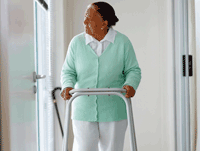
Nursing homes are less compliant with Care Quality Commission standards overall than other social care services, according to early findings from inspections under the new regulatory system introduced last year.
The regulator’s State of Care report showed nursing homes performed less well than residential homes and domiciliary care agencies in complying with all of 10 standards quoted.
However, the CQC said the findings should be treated with “the utmost caution” as they were “very early findings” from a minority of services that did not establish that standards were lower in the nursing home sector overall.
The findings were based on CQC reviews of compliance from October 2010 to July 2011; in most cases these were responsive reviews where issues have been raised about a particular service, as opposed to planned inspections. In responsive reviews, the CQC carries out an inspection and focuses on specific areas of concern.
Just 51% of nursing homes reviewed were fully compliant with the standard on care and welfare, which states that services should seek to meet user’s individual needs, ensure their welfare and safety, comply with established good practice and avoid unlawful discrimination. This compares with a full compliance rate of 68% for residential homes and 73% for home care agencies.
The CQC identified major concerns on care and welfare in 10% of nursing homes, 5% of residential homes and 3% of domiciliary care agencies. Major concerns often lead to compliance actions, where providers are required to improve in certain areas, and in some cases to formal enforcement action, such as warning notices or fines.
Age UK charity director Michelle Mitchell said it was “not acceptable” that nursing homes “were not complying with basic minimum standards required for the well-being and welfare of older people”.
However, Alan Rosenbach, special policy lead to CQC chief executive Cynthia Bower said: “I would treat this data with the utmost caution. In another six months we will have a much more extensive data set.”
“There’s a lot of good care taking place in nursing homes which are increasingly dealing with people with very challenging needs,” he added.
“Things may go wrong in nursing homes because there’s more to go wrong,” said English Community Care Association chief executive Martin Green. “There’s a real challenge when you are looking at the delivery of sub-acute care to people with co-morbidities who are often in the last stages of life.”
He added: “It’s quite difficult to form an opinion when you don’t know what lies behind the statistics. The CQC needs to look at whether it’s comparing like with like.”
Rosenbach pointed out that the findings related to a minority of providers – 799 of the 4,608 nursing homes were reviewed on their compliance with the care and welfare standard – and that a comparison of different types of provision could only be made when many more services had been reviewed.
The CQC intends to roll out annual compliance reviews of all services though this is dependent on extra resources from the Department of Health, which have not yet been secured.
The State of Care follows yesterday’s critical report on the CQC by the health select committee, which criticised “distorted priorities” at the regulator for a sharp drop in inspections following the introduction of the new regulatory regime.
What do you think? Join the debate on CareSpace
Keep up to date with the latest developments in social care. Sign up to our daily and weekly emails
Related articles


 ‘Dear Sajid Javid: please end the inappropriate detention of autistic people and those with learning disabilities’
‘Dear Sajid Javid: please end the inappropriate detention of autistic people and those with learning disabilities’ Ofsted calls for power to scrutinise children’s home groups
Ofsted calls for power to scrutinise children’s home groups Seven in eight commissioners paying below ‘minimum rate for home care’
Seven in eight commissioners paying below ‘minimum rate for home care’ Children and young people with SEND are ‘valued and prioritised’ in Wiltshire, find inspectors
Children and young people with SEND are ‘valued and prioritised’ in Wiltshire, find inspectors 
 Facebook
Facebook X
X LinkedIn
LinkedIn Instagram
Instagram
Comments are closed.